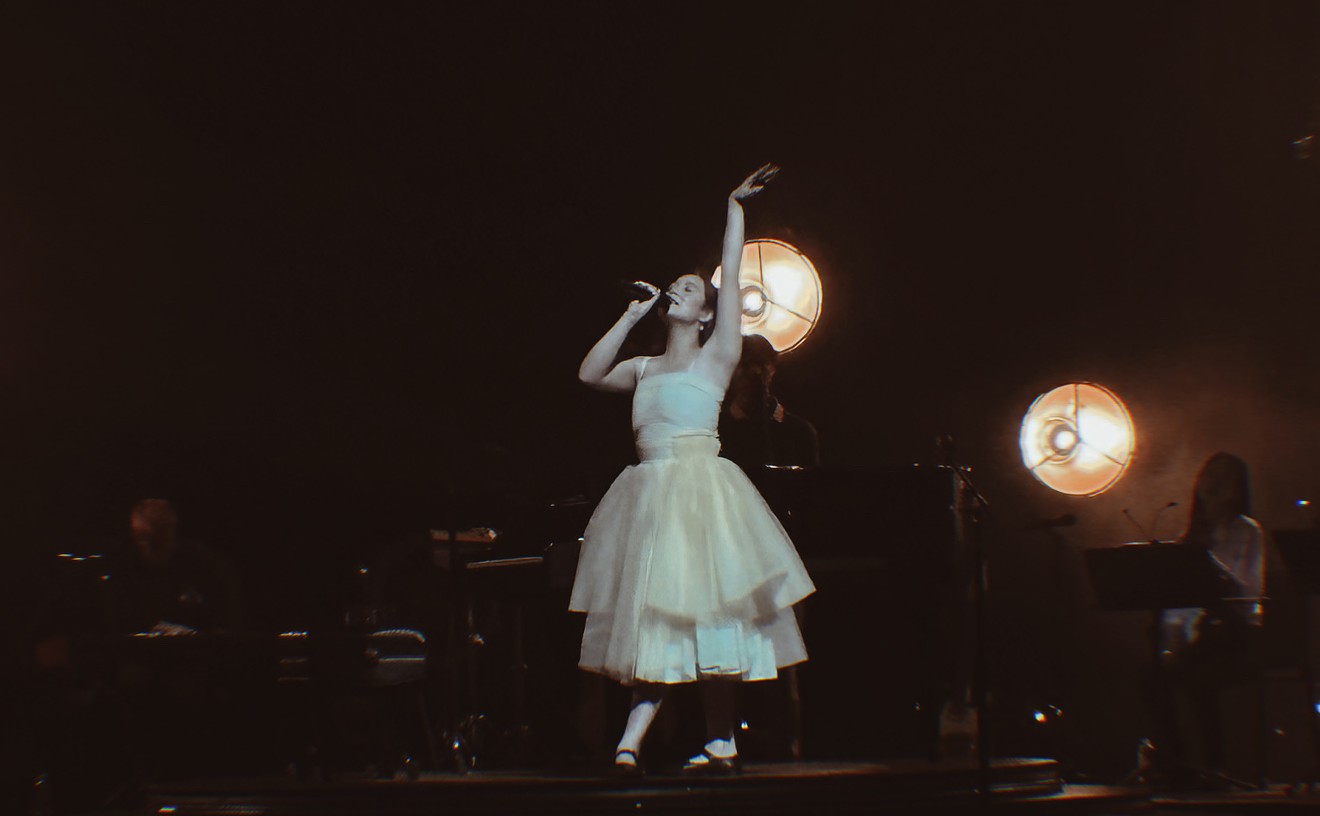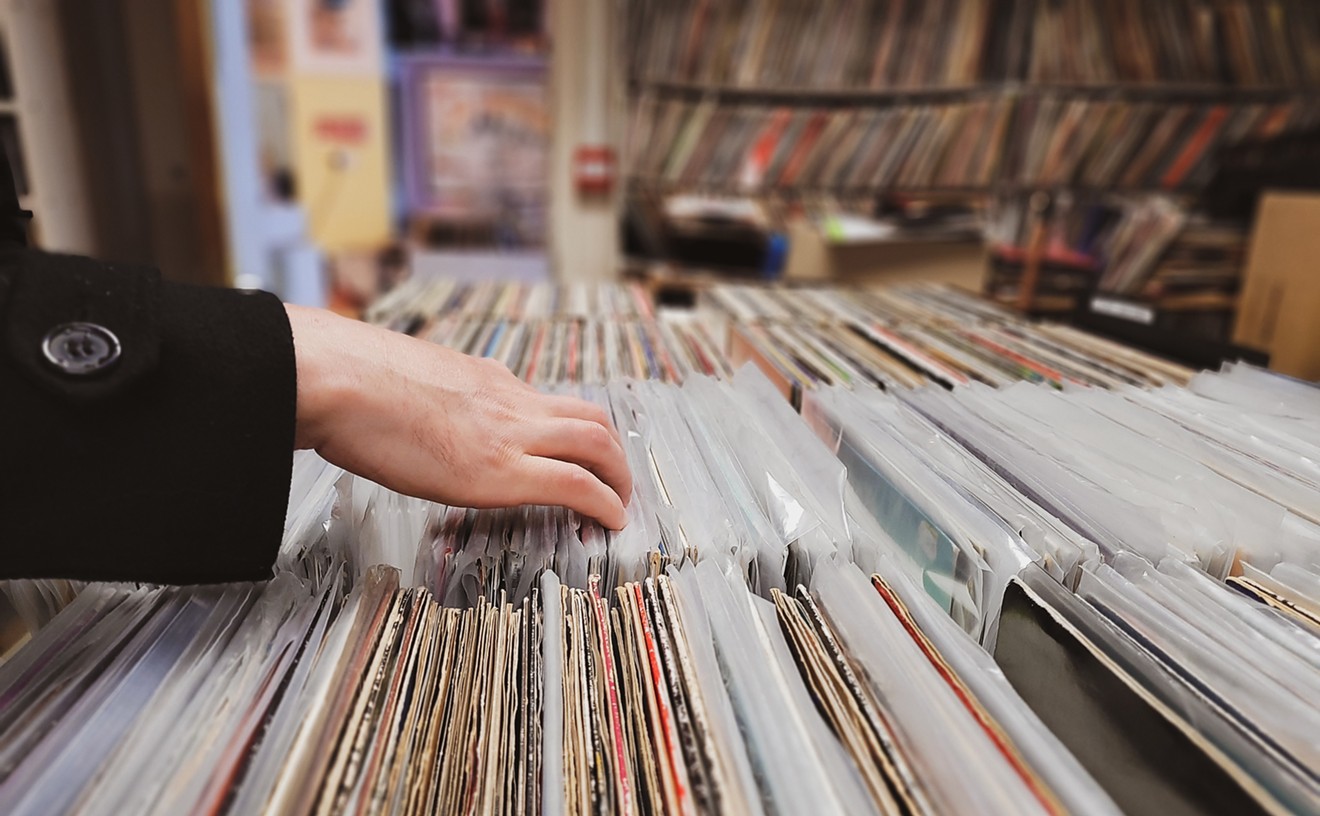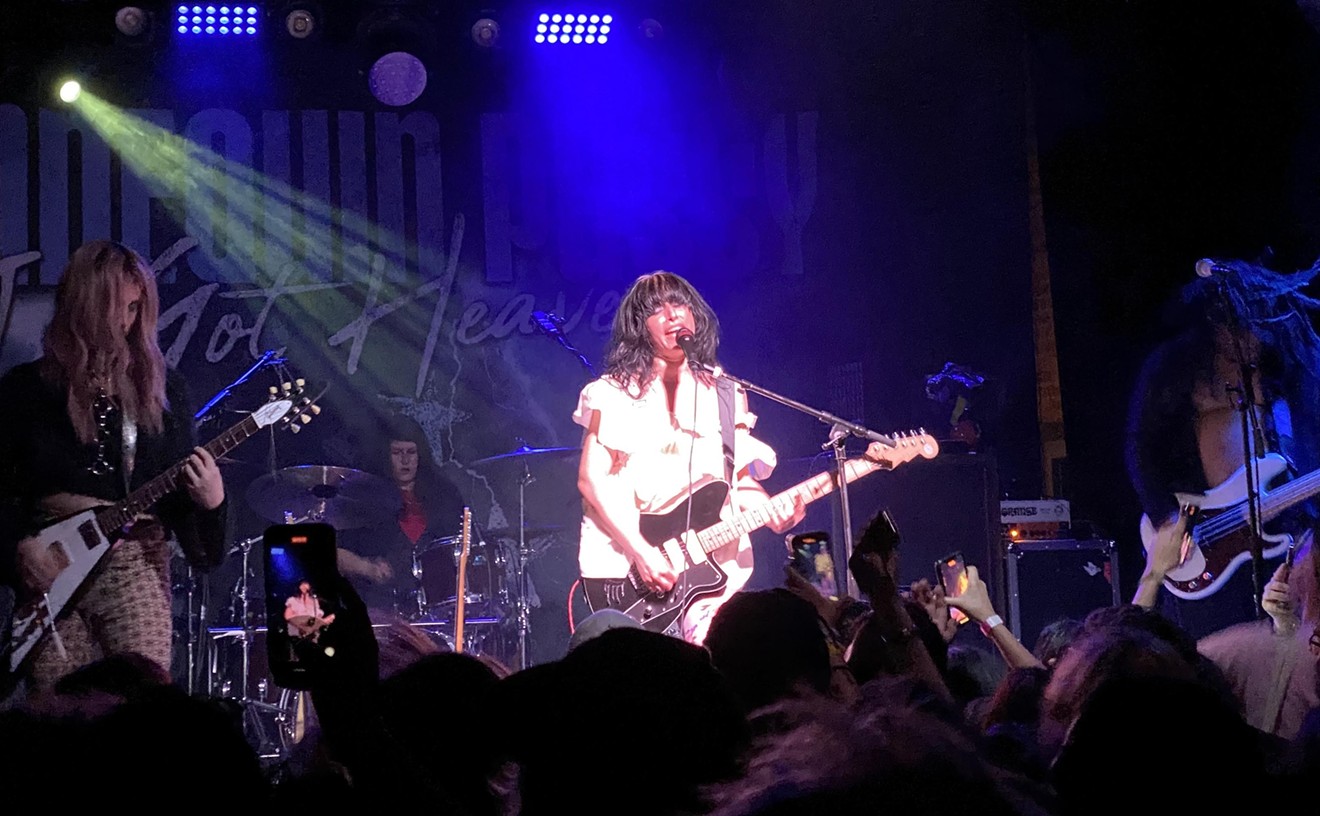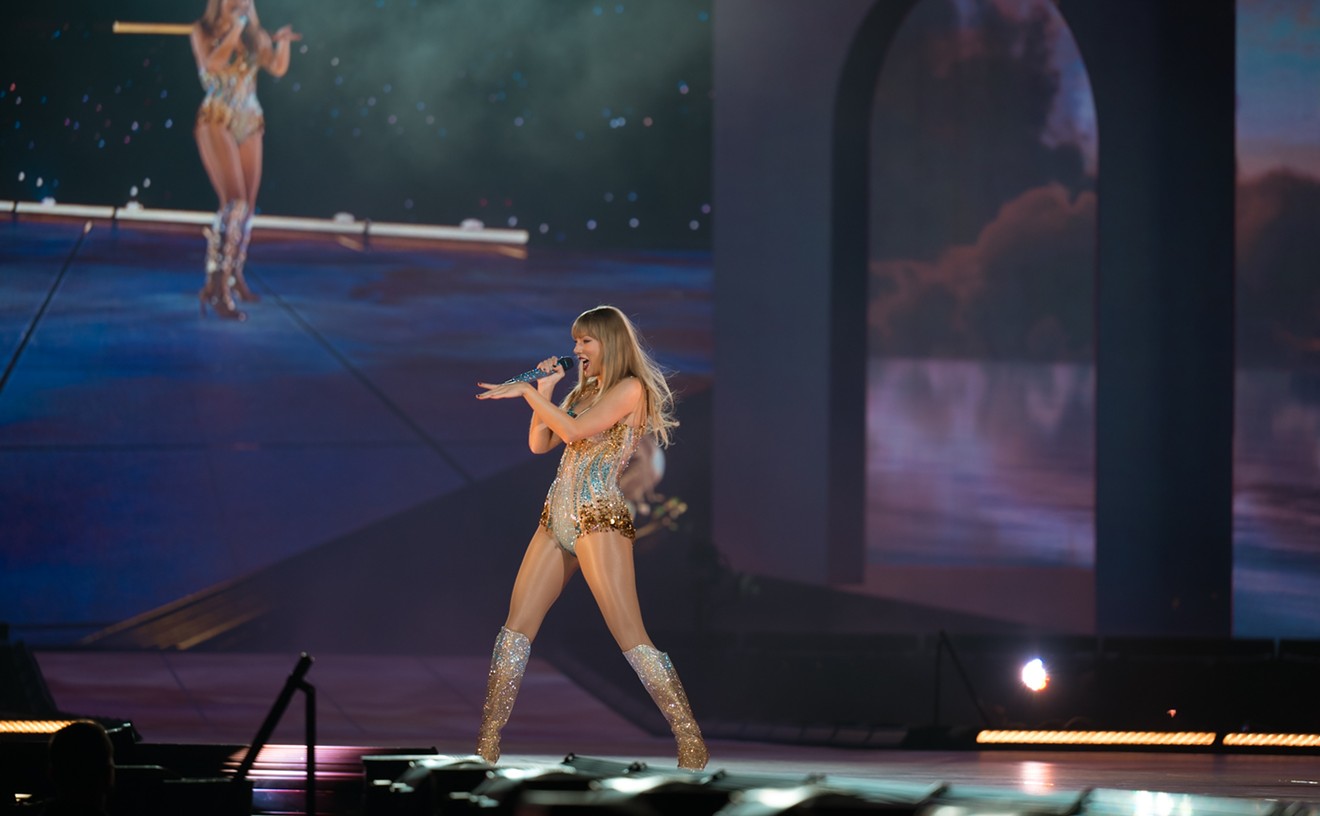Face it: Most jazz clubs are a hellbroth of food service, mating ritual, noise, and cigar-wielding buttheads. During the performances that make up the Sammons Jazz series, however, one can enjoy food, drink, and music in an urbane and attentive atmosphere that ranks as one of Dallas' best entertainment values. If you're a Sammons Jazz member, $14 gets you a light meal, soft drinks, beer, wine, coffee, valet parking, and the chance to hear the cream of the local jazz crop. If you're not a member, add $4.
It has not always been so. The Center was originally the Turtle Creek Pump Station, built in 1909 and for years the sole source of water in Dallas. Pictures from that time show men in dirty overalls lugging oil cans and wrenches around as they tend the enormous machines that once moved the city's drinking water. Obsolete by the '30s, the building was still used by Dallas Water Utilities; pictures from this period show the building growing ever more weathered, surrounded by bright yellow vehicles or hundreds of old-fashioned water meters. Finally, the pumphouse was relegated to storage space.
In 1981 the Texas Historical and Dallas Landmark Commissions
declared the structure a historical landmark (status is still pending before the National Registry of Historic Places), and plans for its renovation and reopening began to form. Prominent Dallasite Jo Kurth Jagoda formed a Board of Directors dedicated to acquiring funding for the renovations; the old pumphouse would not be easy to convert into the rehearsal and performance space that Jagoda and others envisioned. For one thing, it had no floors: the great water pumps the structure had been built to house were almost as tall as the building itself; they were serviced from metal scaffolding that hung about them.
The building had been modified in 1954 when Harry Hines was widened and the old main entrance had been destroyed, and the entire edifice had fallen into disrepair. Finally, in 1985, Jagoda's group had accumulated enough of a nest egg to allow restoration to begin. In 1987, when the project faced a serious shortfall, businessman Charles A. Sammons stepped in and donated the money necessary to complete the work; the building was named in his honor. The Center opened on March 1, 1988, after a total expenditure of $2.3 million.
Ten years earlier, Chilean-born Vicho Vicencio had left Zurich and his job with the Swiss Radio Light Orchestra and traveled to Austin, Texas to open the Treehouse, a spectacular but short-lived jazz club and restaurant. When the Treehouse folded in 1980, Vicencio moved again, this time to Dallas, where he started a Latin jazz/dance band. Gradually, he made a name for himself in the local scene as he widened his playing horizons. Thirteen months after Sammons opened, Vicencio--representing a group of local jazz artists--approached then-Executive Director Mischa Semanitzky with the idea of using one of Sammons' three large rooms for a jazz concert, perhaps even a series.
"I'd always thought the place looked inviting," Vicencio remembers. "With all that brick, it reminded me of Chicago or New York--of Europe, even--and at the time, it seemed like jazz clubs were dying out, with places like the Recovery Room and the 6051 Club closing. It seemed like the right moment to give people a place where they could sit down and hear good jazz, and to give musicians a place to play where they wouldn't be just background."
The first two concerts were given upstairs in the Skyline Room. "I liked it because it was so much like a club," Vicencio says. The third gig, however--focusing on Latin jazz--generated so much response that it was moved downstairs to the 2,800-square foot Meadows Hall, where the series has been held ever since. "It's had its moments of glory and its struggles," says Vicencio, who stepped down as artistic director last year. "Getting funding has always been tough, but the important thing was that we got all the players around town to play here.
"After seven years, I felt like I had asked everybody I knew to play," he says, explaining his departure. "I'll stay on the Board of Directors, but it was time for new ideas." His replacement will be local musician Roger Boykin, who will definitely fulfill the requirement for new ideas.
"The next four shows are going to feature straight-ahead jazz," Boykin explains. "No fusion, no 'contemporary' jazz, and no Oasis [KOAI 107.5 FM] type stuff. Because so many people leave during the second half of the show, the headliner will go on first, and the second act--instead of doing a rehearsed, polished set--will play stuff that's more loose, like a jam session, with more improv."
The Center also hosts another performance series in addition to Sammons Jazz. The Ethnic Arts and Culture Series features small and emerging arts organizations from specific cultures. Organized as a nonprofit corporation, the Center generates approximately 66 percent of its funding themselves through rental and service fees; the remainder comes from programs like Sammons Jazz, contributions, and a small endowment fund. It doesn't cost the taxpayers a dime.
The Center has tenants from 14 arts organizations like the Dallas Chamber Orchestra, the Shakespeare Festival of Dallas, New Arts Six, Mundo Cultural Hispano, and the Turtle Creek Chorale. Forty other community or arts organizations, such as Children's Charities of Dallas, Kitchen Dog Theatre, and the League of Women Voters, use the Sammons Center's facilities for meetings, rehearsals, or whatever. The center is also available for private functions such as parties and weddings.
In the planning stages is Jazz Dallas, an initiative that will use the resources of the Center to provide the support necessary to increase the public's awareness of jazz, both on a local and national level. The effort has three goals: to establish resources for local jazz artists, to create a membership-type organization for jazz fans, and to present regular jazz concerts, festivals, and events throughout town.
To kick things off there will be a "Jazz Summit" at the Center on Saturday, February 15, from noon until 6 p.m. There will be jam sessions, panel discussions, demonstrations, and workshops at the affair, which is free and open to the public. For musicians, free head shots will be taken (part of an artists' registry that Jazz Dallas plans to set up; artists will receive several copies) and professional PR experts who will review--again, for free--artists' promotional materials and assist them in putting together a pro biography that will then become part of the planned registry.
As for the Sammons Jazz Series, Wednesday, February 5 marks the beginning of the spring season with "Dallas Meets Houston," a reprise of a popular show from the first season featuring local bassist John Adams playing with his quintet, and then Houston pianist Joe LoCascio and his trio, with special guest Shelly Carrol (who, incidentally, can be found Monday nights at Sambuca co-leading the house band with Vicho Vicencio) on saxophone. Other programs are "Guitar Madness" (March 5), a tribute to Ella Fitzgerald (April 2) that will be more vocally oriented than the rest of the series, and "Tenor Madness," with Boykin's trio and numerous guests (May 7). The fall season--as yet unplanned--will run from September to December. The programs are held the first Wednesday of each month; doors open at 7 p.m., and the show starts at 7:30. Get there early if you're hungry.
Joining Sammons Jazz will set you back at least $35 per year, but if you attend all eight shows you'll make $32 of that back. You can also give more than that; there are three levels of membership that ascend according to how much you give (over $150 gets you into the Musicians Circle) and offer sundry perks such as tapes and T-shirts. Past shows have included the late Ed Hagan, the brilliant drum ensemble D'Drum, and vibraphone prodigy Dewaylon McCoy. The entire experience--the valets taking your car, the elegant architecture and decorating, the high ceiling and tall windows of the Meadows Room, the superlative music--is a bargain, an excellent date opportunity, and an evening that usually gets you home in time for the weather on TV (or gives you time for a late movie or some other adventure, if you're so inclined). It deserves your support.
For more information on Sammons Jazz or the Center please call Cynthia Flynn at 520-7789. Tickets for Sammons Jazz are available from ARTTIX at 520-ARTS(2787).
Street Beat welcomes any data, information, rumor, or ghost story at [email protected]










